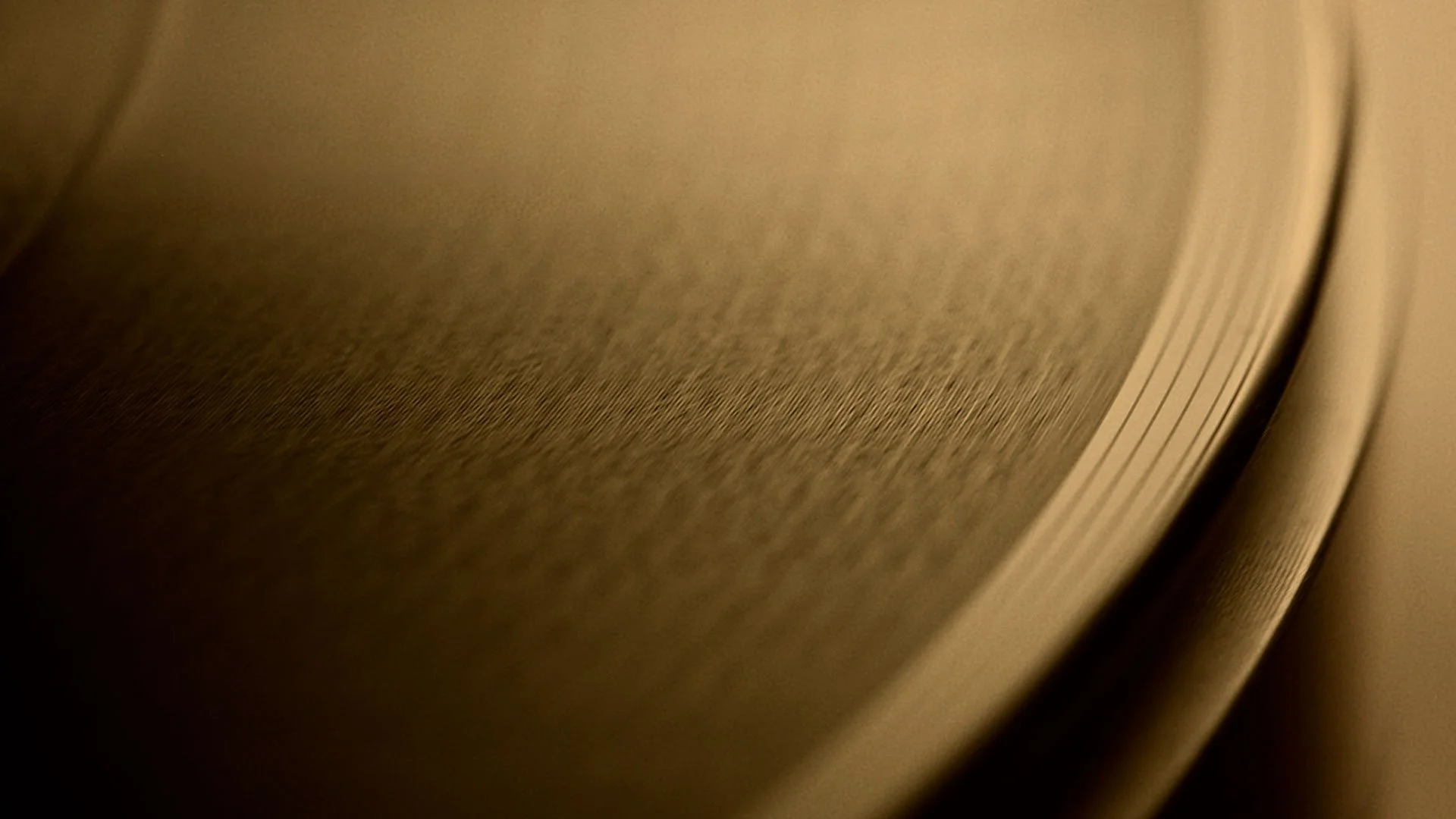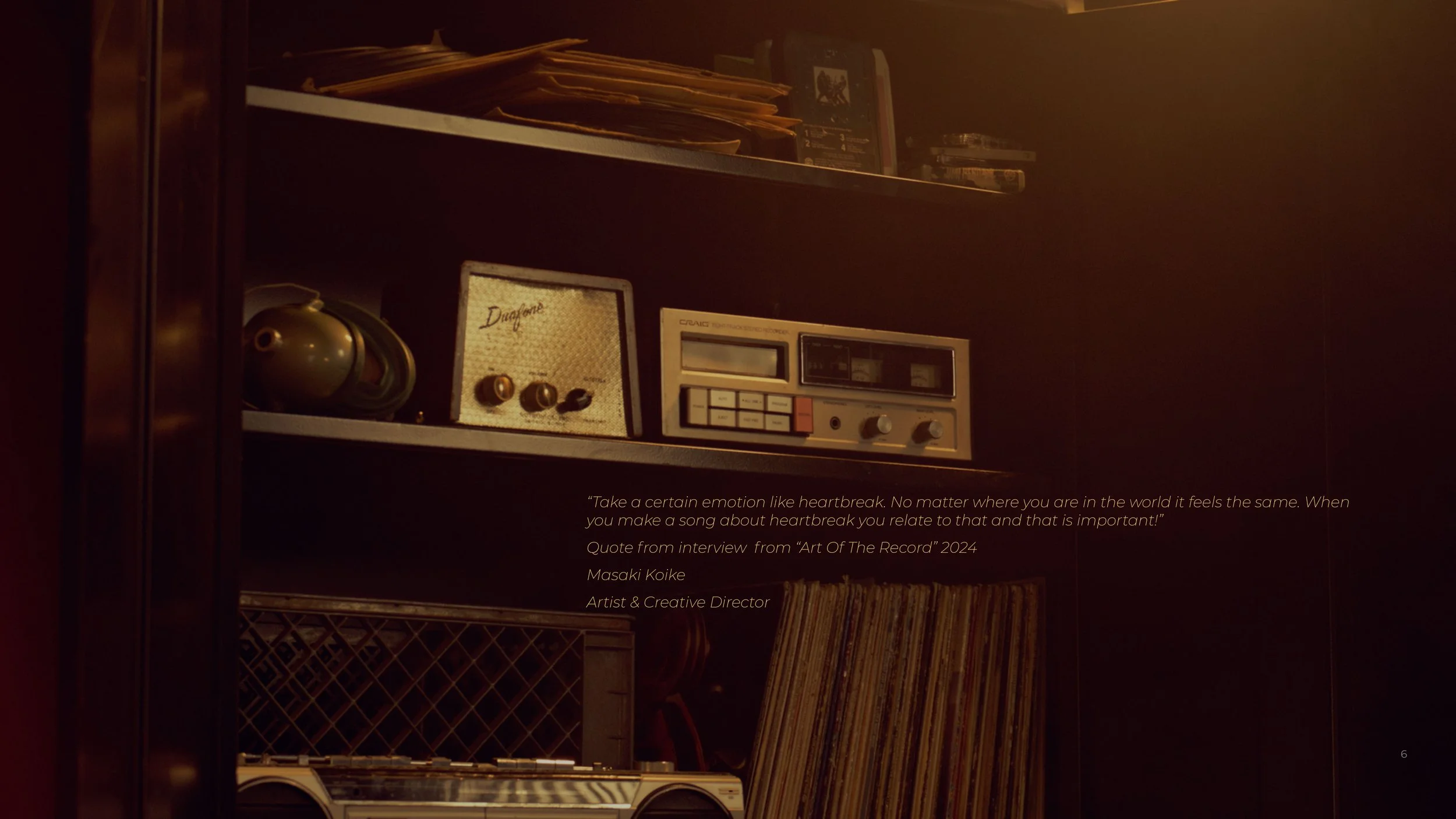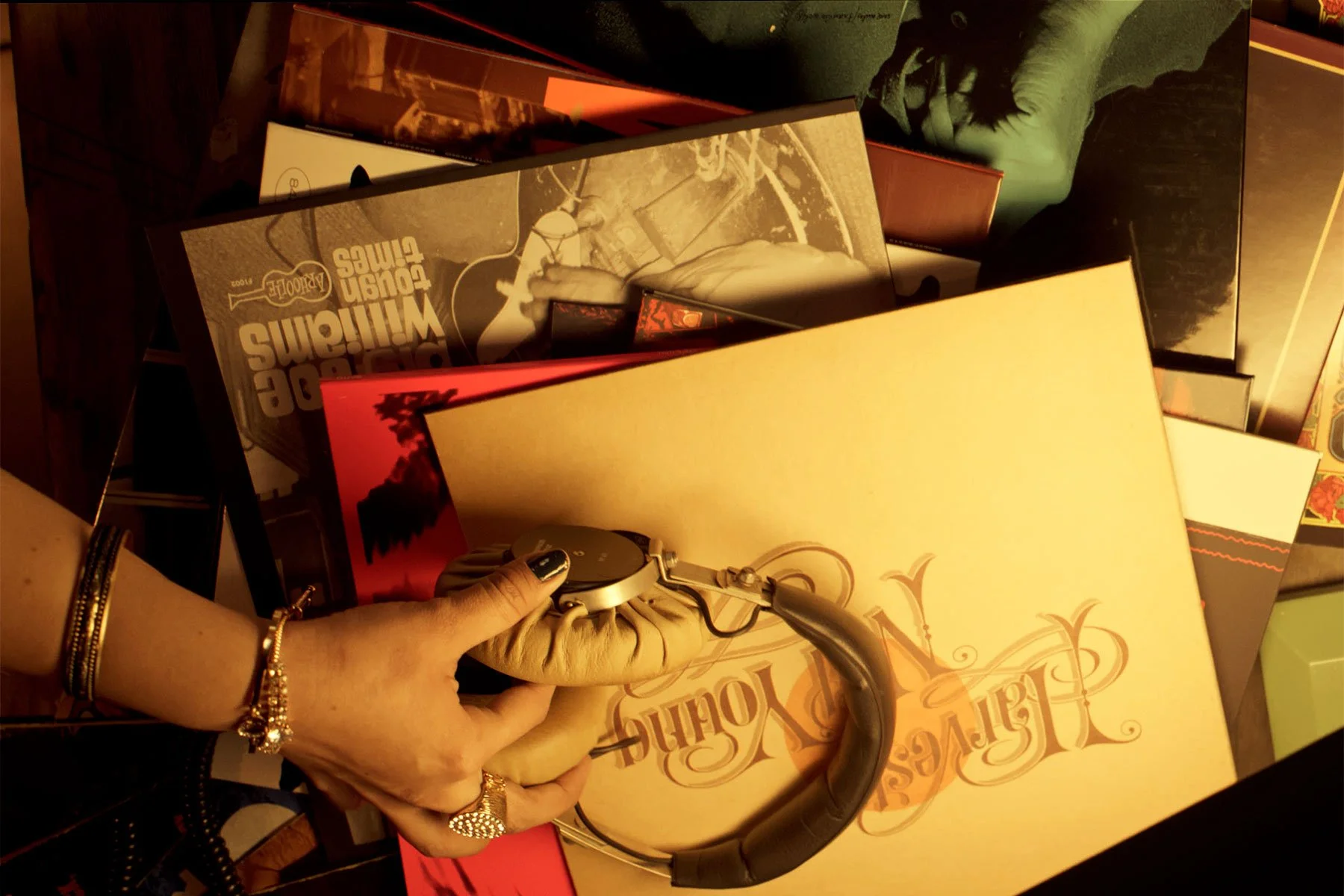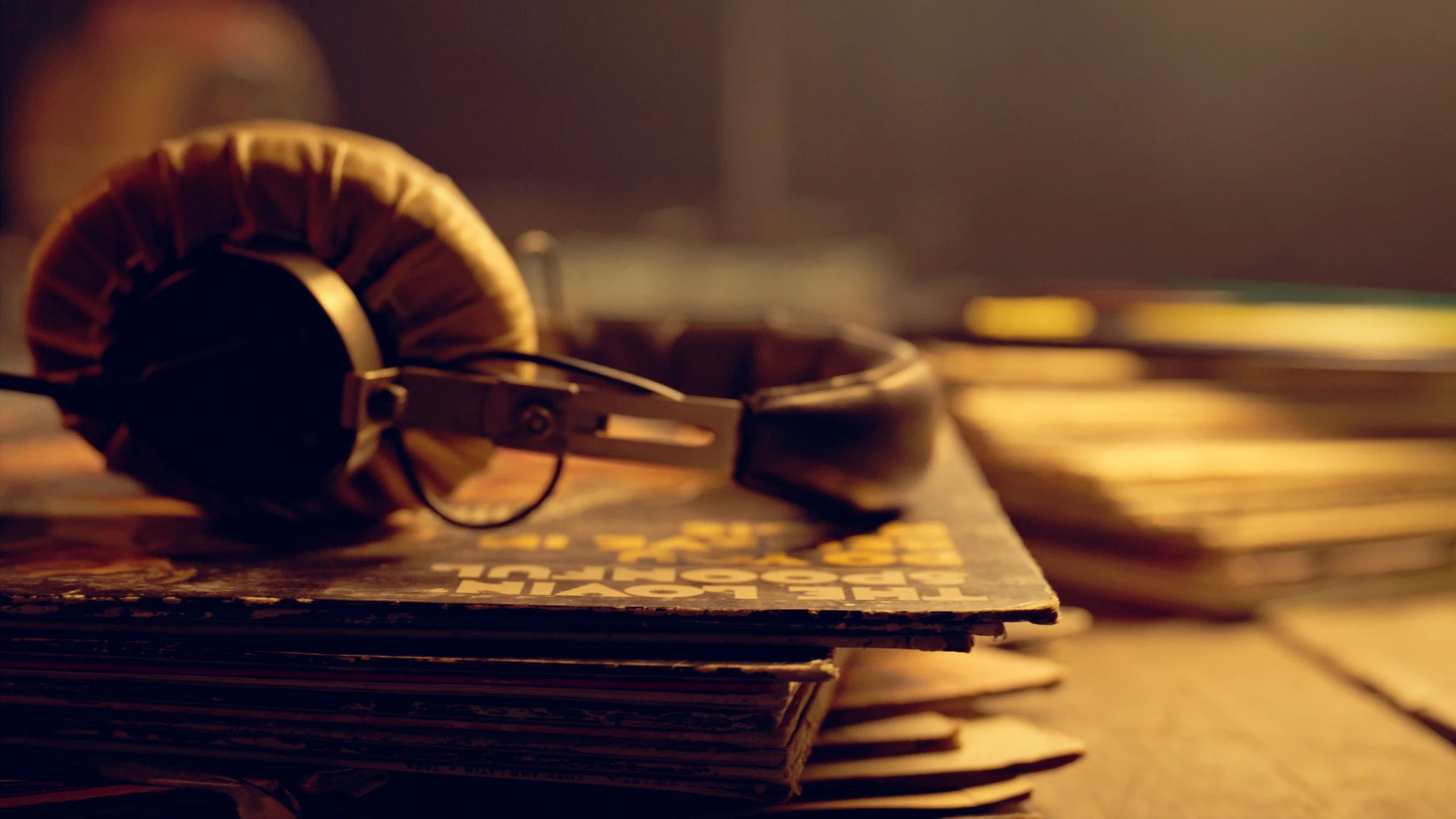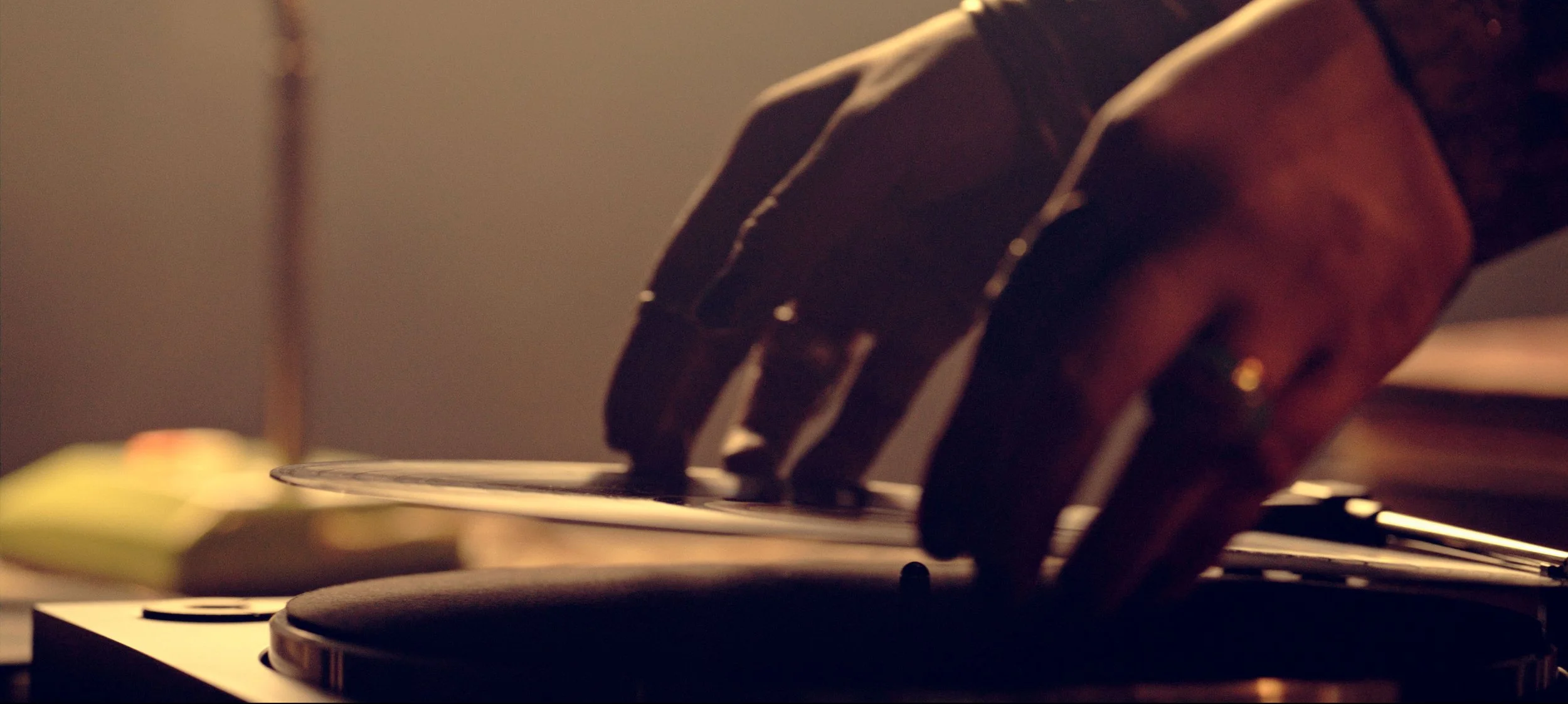
The Story
I will tell this story through the eyes and experiences of the people who live in the world of vinyl. At the center is our main artist, a musician whose personal reflections on struggle, music, and meaning guide us through the journey of a song. We begin in the stillness of the recording studio, move through pressing plants and design studios, step inside record stores, and visit the homes of collectors and fans. Each encounter adds a layer to the story, showing how music becomes something physical, meaningful, and lasting.
Along the way, we meet the craftsmen and women who bring records to life: pressing plant technicians who carve sound into grooves, designers who turn songs into visual art, record executives who believe in the artist’s voice, collectors who preserve rare albums, and listeners who gather to share the ritual of playing a record.
The film unfolds in intimate chapters, from the tactile beauty of album artwork to the science of how music lights up the brain, from heirlooms passed down through generations to the communities that form around shared sound. These moments reveal that records are more than music. They are vessels of memory, identity, and connection.
Through rich, warm visuals and a pace that mirrors the act of playing a record, The Art of the Record invites the audience to slow down, listen deeply, and remember why music matters. In the final scene, the needle drops, a listener closes their eyes, and the journey comes full circle music alive again in the presence of someone who truly hears it.
Key Themes
1. Human Connection to Objects and Symbolism
In an age where so much is digital, and living in the cloud, we hold tighter to the things we can touch. A record is not just a carrier of sound. It is a vessel for memory, a keeper of feeling, and a symbol of connection between artist and listener. Its weight in our hands reminds us that truth comes from the tangible world the world we live in, not just the one we scroll through.
2. Comeback and Resilience
Vinyl’s return from near extinction reflects something deep in us. We are drawn back to the real, to what grounds us. Records prove that not everything from the past loses value, and that beauty worth keeping will always find its way home.
3. Analogy and Meaning
Records are more than grooves in wax. They are a mirror to our need for connection, beauty, and truth. The artwork, the weight, the scent of cardboard these become part of the music, shaping how it lives inside us.
4. The Journey of Creation
From the hum of a studio session to the heat of the pressing plant, from the ink of the jacket to the quiet of a record bin, each step is a testament to care. Following a record’s path is following the human touch behind art itself.
5. Music as Memory and Healing
Music is air in motion, yet it holds entire lifetimes. A single song can bring back a person, a place, a moment. It helps us carry joy, make sense of loss, and find our way through both.
6. Album Art as the First Voice
Before the needle drops, the cover speaks. Album art is the artist’s first message, translated through the hands of designers who see and feel the music. Their work becomes the lasting image of an album’s soul.
7. Wired for Music
We return to the same song a thousand times because our brains are built for it. Music lights up memory, emotion, and movement in ways nothing else can. Science only confirms what we have always known — we are made for music.
8. Community and Identity
Records bring people together. They are shared in living rooms, traded in shops, celebrated in listening groups. A collection is a portrait of a life, a reflection of who we are and the connections we keep.
The Through Line
This story begins with a single voice, a single song, and the quiet moment of creation. At its center is a musician whose journey will carry us through the world of vinyl. Through their eyes, we see how music is born, shaped, and set free into the world, and how it comes back to rest in the hands of someone who truly listens.
We begin in the dim glow of the studio. Instruments rest in the corner, cables lie in soft loops, and the air is thick with possibility. A chord rings out, the melody grows, and the song begins to take form. From here, the journey unfolds. The track leaves the studio and travels to the pressing plant, where grooves are carved, mothers are made, and sound is given a physical shape. Album jackets are printed, colors are chosen, paper is folded, and the record becomes whole.
As the musician reflects, so too does a record label head, speaking of trust, of home, and of the rare magic that happens when a song finds its place in the world and an artist finds their place in the world of music.
The journey circles back to where music truly begins, in the hands of a listener. The needle drops. The record spins. Eyes close. And in that quiet moment, the music lives again.
Along the way, the story opens into smaller journeys, moments that stand on their own yet are forever tied to the life of our record.
The Groove Within
A celebration of the microscopic landscape of a record’s groove, holding within it the entire universe of a song.
Vibrations
The unseen movements of air that carry us to tears, to joy, to stillness. We ask if it is just sound, or something far more mysterious.
Commune
Rooms filled not with noise, but with shared listening. People gathered around a turntable, united in the simple ritual of hearing together.
Our Mothers
The quiet, skilled hands that birth every record. The delicate process of creating the mother from which all copies come.
House on Fire
When faced with loss, what do we save? For collectors, certain records leave the house alongside family photographs and heirlooms.
Hi Fi
A pursuit of sonic perfection, warm, pure, and clear. A devotion to hearing music as it was meant to be heard.
The Record Store
A temple of sound and discovery. The place where strangers and friends meet between rows of vinyl, each searching for something they may not yet know they need.
Tangible
The art you can hold. Designers who turn music into visual poetry, creating covers that become part of the way we remember the songs.
Neural Harmony
Science and soul meet as we learn how music shapes the brain, and how holding a record deepens that bond.
Heirloom
Records passed through generations, carrying the touch and the stories of the people who loved them before.
Our Characters
The Chapters With-in
1. Central Protagonist
Musician (through-line)
Record executive
2. Creators & Industry Voices
Record Labels
Musicians-Artist
Vinyl pressing
(Quality Assurance Manager, Vinyl Auteur)
Bryce Wilson RTI Records Technologies
Pressing Plants & Teams
Art & Design Team
Art Directors
Custom Album Jacket & Package Designers
PHYX design Masaki Koike
Designers from Third Man Records
Album Jacket printers
Stoughton Printing Company
Rob Maushund
Sam Gay
3. The Album's Journey | Record Label
(Studio → Pressing → Store)
Record Stores Representing the Experience
Dr. Strange Records
4. Cultural Impact & Personal Stories
Legacy, History & Past Memories.
People with albums passed down from loved ones who have passed away.
People who have rare and valuable albums that are given to them by loved ones.
Collectors
Vinyl Collectors
Hi-Fi Collectors & Restorers of high end equipment.
Listening Communities
Intimate groups that gather to listen and share music
5. Music lights up your brain
Neuroscientist like David Eagleman , author and teacher, Podcaster, documentary.
Neuroscientist explains how your entire brain comes alive when you hear music. “You brain is made for Music”
Visual Style
The visual style will move with intention, slow, steady, and thoughtful, inviting the audience to pause and absorb each moment, much like the pace of playing a record. Camera movement will be rare and deliberate, sometimes following the rhythm of the music when the emotion calls for it, but always in service of the story. Even in moments of energy, the camera will follow with grace, matching an artist’s steps down a hallway or their movements while playing. Once an environment is set, the frame will move closer, drawing the viewer into a shared, personal space, as if they are in the room listening to the music together.
The film will live in a world lit from behind, soft and glowing. Most scenes will feel as if they happen after dark, when people slow down, reflect, and truly listen. Night is when we go out to hear music or stay in to sit with it, and this atmosphere will feel natural, shaped by ambient and minimal light. Warm tones of red and gold will guide the mood, while a shallow depth of field will pull the eye inward and let the background fade into a gentle blur. Backlight and a touch of haze will bring depth and texture, creating a feeling that is dreamlike yet real.
The look will be rich and intentional, with fluid camera work and every frame made with care, like the quiet attention we give to a great record, something to hold, to feel, and to keep.

